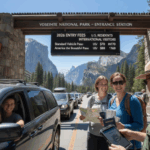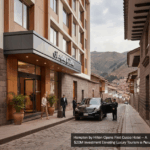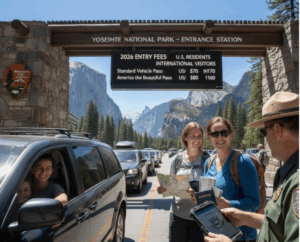Cross-border travel patterns between Canada and the U.S. in 2025 reveal a striking contrast: Canadians are vacationing less in the U.S., while Windsor-Essex continues to see healthy American tourist traffic, even amid economic and political turbulence.
Canadian Travel to the U.S. Sees Steep Decline
- Travel from Canada to the United States has plunged due to a combination of factors—unfavorable exchange rates, political tensions, new U.S. tariff policies, and general economic uncertainty.
- Recent statistics show a dramatic downturn: Canadian road trips to the U.S. dropped by more than one-third from last year, with air travel also declining by over 20%. Over 65% of surveyed Canadians have consciously avoided U.S. trips in 2025, often opting for domestic travel or destinations with better value.
- This trend is affecting businesses in U.S. border states that traditionally rely on Canadian clientele, with hospitality and retail sectors feeling the pinch as spending by Canadian visitors falls sharply.
- Industry analysts warn that even a 10% drop in Canadian visitation could put billions in U.S. tourism spending and hundreds of thousands of related jobs at risk. With current declines hovering at 30–40%, the impact for 2025 is expected to exceed $10 billion in lost tourism revenue.
American Tourist Numbers in Windsor-Essex Remain Strong
- Despite fewer Canadians heading stateside, many Windsor-Essex businesses report solid, sometimes even growing, interest and loyalty from American tourists. Breweries and local attractions like the Rum Runners Tour have seen consistent U.S. visitors, especially from nearby Detroit.
- Operators note that favorable weather, proximity to major entertainment venues (like Windsor’s casino), and the unique cultural bond between Detroit and Windsor help sustain American traffic.
- Some tourism providers have shifted their sourcing and marketing to adapt to tariff threats and supply chain uncertainties, enhancing local collaboration while ensuring American customers feel welcome and valued.
Not All Sectors Benefit Equally
- There are, however, varied fortunes. Windsor’s historic Sandwich First Baptist Church, a key site for Black heritage and Underground Railroad history, has seen a marked drop in American bus tours, highlighting how some cultural and heritage attractions remain vulnerable to overall cross-border travel anxieties.
- Regional tourism authorities emphasize the ongoing need to nurture both U.S. and Canadian visitor markets, leveraging Windsor-Essex’s position as a “two-nation destination” and investing in campaigns promoting unique local experiences.
Looking Ahead: Strategies for Resilience
- Windsor-Essex’s experience underscores the importance of flexible, community-driven tourism strategies. Businesses are adapting sourcing, enhancing heritage attractions, and fostering cross-border partnerships to weather uncertainty.
- New infrastructure, such as expanded bike and trail systems and collaborative festivals, are being promoted to attract both short-term and extended-stay visitors from both sides of the border.
Key Points:
- Canadian visits to the U.S. have fallen by more than a third in 2025, mainly due to unfavorable exchange rates, tariffs, and political tensions.
- Many Windsor businesses report strong American tourist demand, especially for local attractions, despite the broader trade and travel challenges.
- Success and challenges vary by sector, with heritage attractions particularly sensitive to shifts in cross-border travel.
- The region’s future lies in dynamic, diversified tourism strategies and leveraging its cross-border cultural connections.
















More Stories
U.S. National Parks Launch Dual Pricing System: Affordable Access for Americans, Higher Fees for Overseas Visitors to Fund Maintenance
Hampton by Hilton Opens First Hotel in Cusco, Peru with $20 Million Investment, Boosting Tourism Growth and Expanding Latin American Footprint
Florida Joins Nevada, Hawaii, Georgia, and New York in Driving Record-Breaking Tourism Growth in the United States